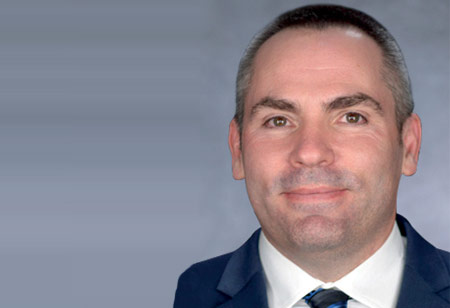Thank you for Subscribing to Healthcare Business Review Weekly Brief

How Hospice Transforms Tech Into Hands-on Comfort Care
Healthcare Business Review
Hospice is a hands-on discipline. Patients and their loved ones, who often serve as caregivers, tend to choose providers by their reputation for comprehensive and accessible comfort-focused care rather than their ability to showcase the leading edge of medical tech.
After all, these patients are dying, and technological advancements like robot-assisted laser surgery, cardiac defibrillators, and same-day diagnostics won’t meaningfully alter their disease progression. Why would techy buzzwords sway their choice when they’re primarily seeking hands-on, personalized care that offers comfort, quality of life, and dignity near the end of life?
During the COVID-19 pandemic, however, technology has taken center stage as providers— hospice included—are relying on telehealth to deliver certain types of care without the infection risk of a face-to-face interaction. Hospice providers are embracing the power of technological innovation to facilitate and enhance caring patient-clinician interactions and healthcare activities ranging from ordinary conversation to immersive virtual reality.
Videoconferences now support goals-of-care conversations and advance care planning sessions that occur prior to hospice referral. Hospice representatives are reducing gaps in care by connecting virtually with patients and clinicians to support earlier identification of hospice-eligible patients.
Technology spans hospice eligibility to bereavement
Admissions nurses use telehealth to conduct a head-to-toe examination and determine eligibility at any hour with minimal disruption, while virtual tours help clinicians familiarize themselves with a patient’s living space and decide what durable medical equipment should be delivered.
During emergencies and natural disasters, remote care overcomes barriers to access such as flooded roads or damaged infrastructure. Distant family members rely on broadened access to telehealth to involve themselves in care decisions. After a patient dies, virtual bereavement care supports their loved ones anywhere in the world.
Leading healthcare providers promote a culture of continuous improvement, and rapid adoption of telehealth contributes to that culture. When new technology proves capable of delivering a better experience to patients and their families, prudent clinicians implement it—even if that means developing new systems to accommodate its use.
5G supports, expands opportunities
Some industry leaders have developed their own digital infrastructure to track and manage patients, and many have embraced mobile devices to enable a more robust, safer “workplace” for teams whose workday involved long stretches on the road and visits to patients’ private residences. The rise of 5G cellular networking offers additional speed and reliability for these tools, as well as for digital processes that hospices and other healthcare providers utilize day to day: data management, billing, emergency response, and patient care itself.
Early studies highlight another surprising application for 5G networking: virtual reality (VR). With broadband data transfer, providers can stream curated experiences from powerful remote computers to clinicians’
VR headsets in the field, offering patients the chance to relax in a calming environment while experiencing measurable improvements in perceived pain. This increased opportunity for connection to the world, particularly amid the enforced solitude of the COVID-19 era, should not be undervalued.
Tech connects patients/ caregivers with information
The average age of a caregiver is 63 when the patient is over age 65, according to the Family Caregiver Alliance. At VITAS specifically, the average hospice patient is nearly 79 years old. To best connect with caregivers of hospice-eligible patients, we must consider the information-seeking behaviors of people in their 60s. Baby Boomers have long been trailblazers, and their approach to interacting with healthcare continues that pattern.
Hospice representatives are reducing gaps in care by connecting virtually with patients and clinicians to support earlier identification of hospice-eligible patients
Search engine optimization (SEO) tools offer clinicians clarity into how consumers seek their services, empowering them to adjust their communication accordingly. These analytics are useful for capturing the habits and concerns of typically younger, more tech-savvy consumers. However, several studies from the past 15 years show that older consumers more frequently rely on traditional information sources—i.e., the telephone and print resources—to make healthcare decisions.
AI-powered call-tracking services analyze verbal keywords in inbound calls much like an SEO tool analyzes digital keywords in online searches, making them effective in capturing concerns from the average hospice caregiver. Additionally, the conversational nature of a phone call provides insight into consumer behavior that isn’t evident in a truncated query string. With both systems in play, clinicians have a holistic view of when, how, and why their services are sought, empowering them to reach patients earlier and with greater specificity.
Today, mobile apps are so ubiquitous that it’s easy to gloss over their utility. The VITAS app adds value as it enables communication with physicians, supports inquiries about hospice eligibility, offers quick and secure patient referral, and tracks key health indicators. Physicians encounter a suite of interactive tools in a simple, elegant app, and referral sources can be assured that hospice clinicians and their admissions teams are never more than a tap away.
In healthcare—especially near the end of life—technology works best when it augments the tools that clinical professionals are born with: caring hands, a soothing voice, and a calming presence. Hospice, palliative care, and other hands-on specialties may not have a tech-savvy image, but great clinicians nevertheless embrace technological advancement to grant patients improved comfort, support, and outcomes when they matter most.









